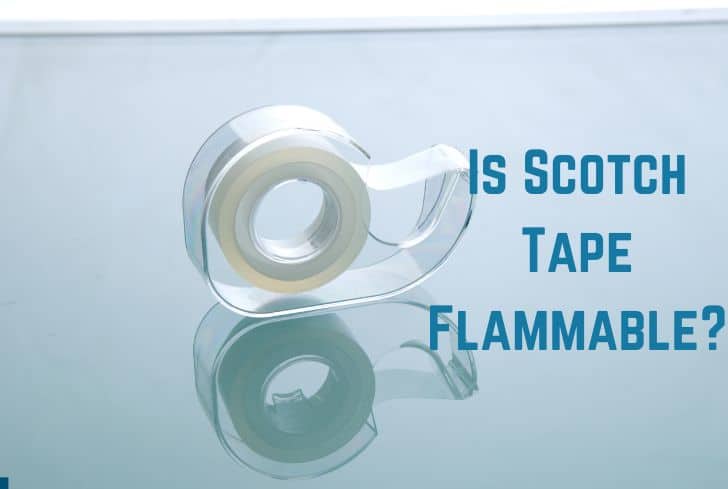Is Resin Flammable? (Does It Catch Fire?)

Resin is a solid or highly viscous substance of natural or synthetic origin that is convertible into polymers. They are mainly valued for their ability to transform from a liquid into a well-designed solid, homogenous structure. Resins are mostly used in the form of moulds, protective linings, and coatings.
You might have used resin in your art and craft work, or perhaps while flooring. Have you ever wondered if it poses a fire hazard? In this article, we are going to discuss just that. We will talk about the different types of resins such as epoxy and polyester resin. Then we will discuss their curing process. Finally, we will talk about their fire and safety hazards.
Does Resin Catch Fire?
There are several different kinds of resin, and yes, many of them can catch fire. Therefore, it is always essential to learn about the specific resin you are using and its properties. Epoxy resin, after it has been cured, is not flammable and is fire-resistant. However, other kinds of resins are flammable.
Let us first discuss what is curing. Curing is the process by which the resin transforms from a liquid state into a solid state, and it is the essential feature of all thermoset polymers. The curing process involves a chemical reaction that leads to the formation of a tridimensional polymeric network—in simpler terms, the liquid resin transforms into a hard and strong solid.
There are several different types of resins. Polyester resin has a low flashpoint (the temperature at which a substance gives off sufficient vapour to ignite in the air) and is easily flammable. Epoxy resin requires a much higher temperature to ignite.
Difference Between Polyester Resin and Epoxy Resin
Both polyester resin and epoxy resin have a wide variety of applications in industrial and household settings. However, they vary in several ways such as bonding strength, cost, curing time, etc. They are also different in terms of the fire hazard that they pose.
Polyester resin has a much lower bonding strength as compared to epoxy resin; the former can hold less than 500 lbs. per square inch, while the latter can hold up to 2000 lbs. per square inch. The resistance to wear also shows the same pattern: polyester resin is fragile and good only for temporary fixes. Epoxy resin, on the other hand, is much more resistant to wearing & cracking.
Polyester resin is significantly cheaper while epoxy resin is costlier because of its strength and formation requirements. Due to its lower cost, polyester resin is more popular in craft making & jewellery.
Cure times vary for both polyester and epoxy resin, but in general, polyester resin cures faster. Although polyester resin takes less time to cure, it is known for its bad odour, which is why ventilation is necessary when working with it. Finally, polyester resin has a much shorter shelf life; epoxy, on the other hand, can remain strong for many years.
Is Epoxy Resin Flammable?
Epoxy resin is not flammable after it has been fully cured. During the curing process, it does have the potential to ignite, but this is very unlikely. While curing, the mixture of epoxy resin requires a very high degree of temperature to ignite, which would first burn the wood or product you are working on.
Epoxy resin is formed by the polymerization of the resin and a curing agent. The reaction between these two components is exothermic, meaning that it produces heat. In most cases, this results in some fumes coming out of the mixture, which looks similar to smoke.
However, this is not fire, but simply evaporating gases. Pouring too much epoxy at once can be a problem because their curing can create high temperatures, which might ignite the material with which you are working. So always check the amount of epoxy you are using and its temperature.
This is not just about the fire risk, but also the quality of the finished/cured resin. You must ensure that the temperature doesn’t go beyond the limit otherwise there might be splits or bubbles in your finished resin.
After the curing has finished, the epoxy resin will not be easily flammable. Check out this video by James Klafehn to see how epoxy burns.
Is Polyester Resin Flammable?
Yes, polyester resin is flammable. It has a very low flashpoint of 90°F (32°C), much lower than that of epoxy resin. This means that on a warm day, the flashpoint is easily reached, and even a small spark can light up polyester resin. You need to take special precautions while working with polyester resin.
Polyester resin is a polymer, meaning that it consists of very large molecules called macromolecules, which are composed of many repeating subunits. It is a major component in many industries, from construction to aerospace. Polyester resin is also cheaper compared to other resins like epoxy and urethanes.
Polyester resin has a flashpoint of 90°F (32°C) and is easily flammable. This is why you should never work with polyester around an open flame or any electrical equipment that might spark. Moreover, you should also wear a respiratory mask to protect yourself from the fumes, which are toxic as well as flammable.
Is Resin Flammable When Wet?
Yes, polyester resin is highly inflammable when wet, that is when it is curing or hardening from a liquid into a solid. Epoxy resin can also get hot enough during the curing process to emit hazardous fumes that can ignite combustible materials nearby.
Polyester resin has a flashpoint of about 90°F (32°C), and it is highly flammable when it is curing. If the polyester resin contains only styrene monomer, then it becomes even more dangerous in terms of flammability.
Polyester resin is particularly dangerous when it is being cured by acetone. Acetone is highly flammable, and it can cause a fire if you are not taking proper precautions.
The epoxy resin cures by an exothermic chemical reaction, that is, it produces heat. When left in a closed container (like a mixing pot), epoxy can get hot enough to burn your skin, melt plastic, or even ignite combustible materials nearby. Epoxy resin needs to be poured into a shallow, wide container to prevent heat buildup.
If the hardener (curing agent of epoxy) mixes with woodchips or sawdust, then it can cause a fire. This is why you should never use sawdust or other types of cellulose to absorb hardener spills. You should also not pour unused hardener in a trash can having sawdust.

At What Temperature Does Resin Melt?
Different types of resin have different melting points. Polyester resin, for example, can usually withstand temperatures up to 176°F (80°C). Epoxy resin is much more resistant in general, and also has a higher melting point. It can be made to resist temperatures up to 550°F (290°C).
Polyester resins are synthetic resins made by the reaction of dibasic organic acids and polyhydric alcohols. These are usually strengthened with fibreglass and used in wall panels of restaurants, washrooms, and kitchens, which require washable and low-maintenance walls.
Polyester resins can melt at over 176°F (80°C), and their flash point is even lower, somewhere around 90°F (32°C). Epoxy resin is stronger and more expensive than polyester resin. They have a much higher flashpoint, and their melting point is also higher (about 550°F/290°C).
Can Epoxy Resin Explode?
Epoxy resin is combustible and can pose an explosion hazard. During the curing process, epoxy resin releases hazardous fumes. These can combine with nearby materials and possibly ignite a fire.
Epoxy resin cures by an exothermic reaction between the resin and the curing agent. The reaction generates heat, and in a poorly ventilated area, the heat can build up. The resin itself may not explode, but nearby combustible items like sawdust can explode by its heat.
Does Resin Burn or Melt?
Epoxy resin can melt, but it is unlikely to happen in normal conditions. Its melting point is over 550°F, and if you were to heat it to that point, it will melt. Epoxy resin can burn if it comes in contact with an open flame. Polyester resin can also both melt and burn.
Epoxy resin is much more resistant than polyester resin, in terms of both strength and fire resistance. However, if you take the temperature to its melting point, it will inevitably melt. Moreover, its curing process is exothermic. This heat can be dangerous because it can ignite nearby materials.
Polyester resin has a flashpoint of 90°F (32°C) and is easily flammable. Its melting point is also much lower; it cannot withstand temperatures over 176°F (80°C) and will melt.
Conclusion
In this article, we have discussed whether resin is flammable or not. We began by looking at the two main types of resin, polyester and epoxy. Then we discussed how they cure from a liquid to a solid state. Finally, we talked about how polyester resin has a low flashpoint and can ignite easily. Epoxy resin gets heated up during the curing process and can also pose dangers.






